We all know, in general, what a gnat is. Although they’re several times smaller than the average housefly, gnats are about one thousand times more annoying.
They invade kitchens, bathrooms, and dining areas and infest food, drinks, and sinks.
Types of Gnats: A Summary
Did you know that not all gnats are the same?
There are several different types of gnats that you might see commonly around your home, including biting gnats and non-biting gnats. And despite their tiny size, there are easy ways to identify them.
Identifying the types of gnats in your home is the first step you need to take to effectively eliminate them once and for all. If you’re tired of seeing those tiny insects floating in your coffee mug every morning, keep reading to learn more.
There are over 3,000 species of gnats in the world, with about a third of them present in North America. The word gnat is a very general term that applies to a wide range of tiny, flying insects.
While we can’t go over every single type of gnat in the world, we can discuss some of the most common species often found in the homes of America:
- Fungus Gnats
- Eye Gnats
- Fruit Flies
- Drain Gnats
- Sand Flies
- Buffalo Gnats
- Gall Gnats
- Phorid Flies
- Midges
9 of Different Types of Gnats
Let’s take a closer look at the nine different types of gnats we mentioned above. Pay close attention to the details so you can learn to identify the types of gnats in your home.
1. Fungus Gnats
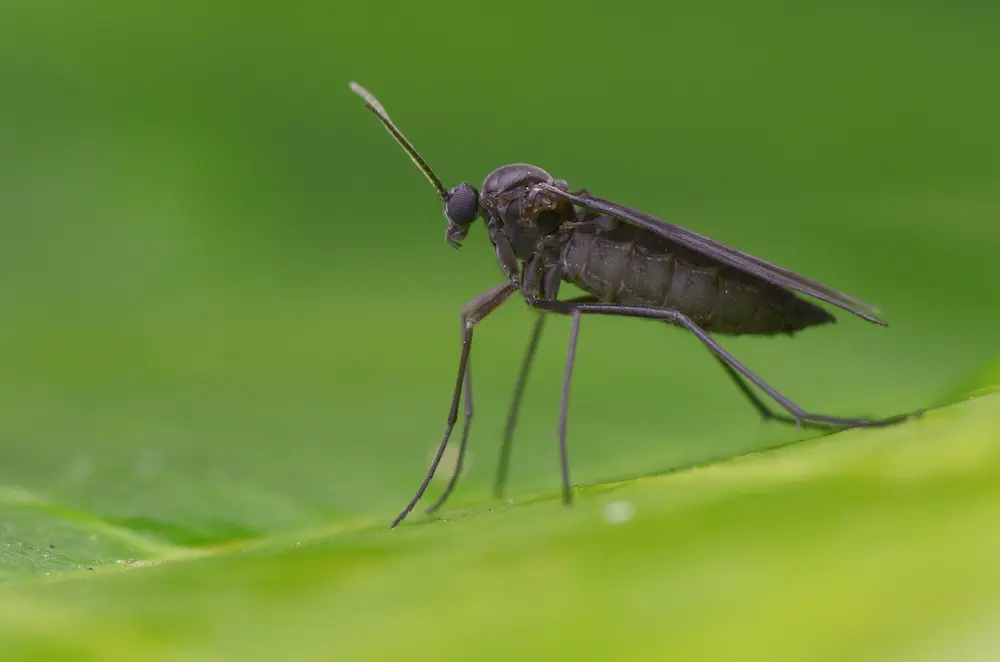
Simon Shim/Shutterstock
Fungus gnats are quick to capture our attention because of their similar appearance to mosquitoes. No one wants a mosquito trapped in their home, so we make fast work of squashing them. But unlike mosquitoes, fungus gnats don’t bite.
Their bodies sport long, spiny legs and are about one-eighth of an inch long. Fungus gnats not only look different from other types of gnats, but they also have dissimilar eating habits.
While most gnats enjoy fruits, vegetables, and meat, fungus gnats thrive on plants. They will eat roots, algae, grass, leaves, and fungi, and they will lay their eggs in moist soil. If you have plants in your home, the type of gnats you see may be fungus gnats.
2. Eye Gnats
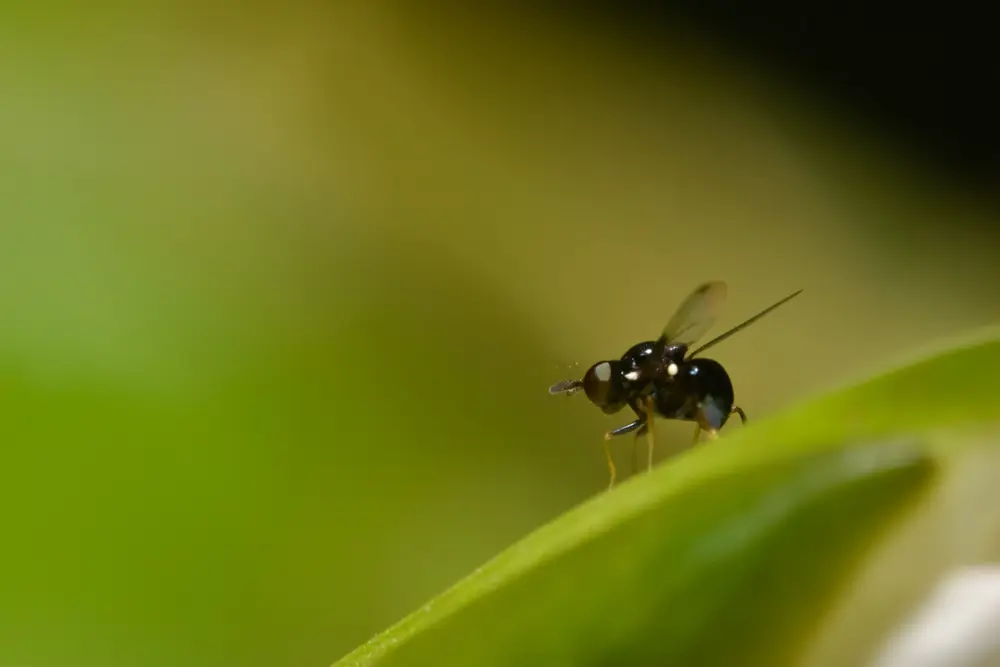
Maytee Laohamaytee/Shutterstock
Most gnats are appropriately named, and this is still true of the eye gnat. Eye gnats are those pesky little insects that invade your personal space by flying right into your eyes, nose, or mouth.
As one of the smallest gnat species, they only grow to about one-sixteenth of an inch. Their tiny black bodies often go unnoticed—until one flies directly into your eye.
These insects do so because they are attracted to a protein that’s found in the eyes, ears, and nose fluids of humans and animals.
Eye gnats are more than just a nuisance, though. These insects often carry diseases and can transmit them to humans. The most common of these is conjunctivitis, or pink eye.
3. Fruit Flies
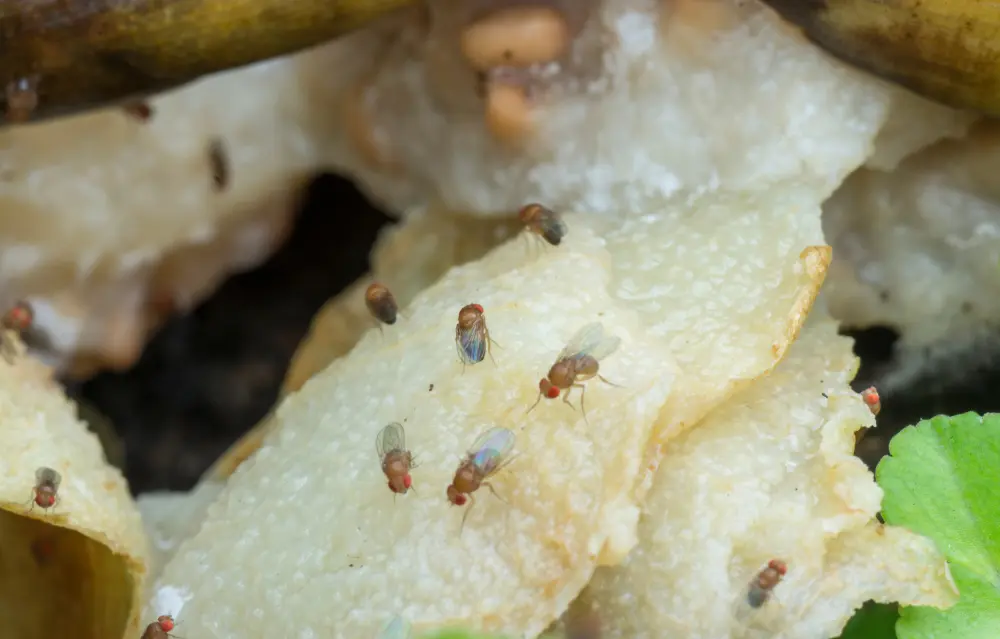
Young Swee Ming/Shutterstock
The words gnats and fruit flies are typically used interchangeably, but they don’t always actually mean the same thing. Fruit flies most often hang around your kitchen, though you can get them anywhere you leave uncovered foods.
Fruit flies prefer to eat fruits and vegetables, swarming around any produce that sits out on the countertops. You may also see them around trash and recycling bins.
This type of gnat is known for its light yellow or tan-colored body. Although you probably won’t be able to tell, it has bright red eyes. You can expect a fruit fly to be around a third of the size of a house fly.
4. Drain Gnats
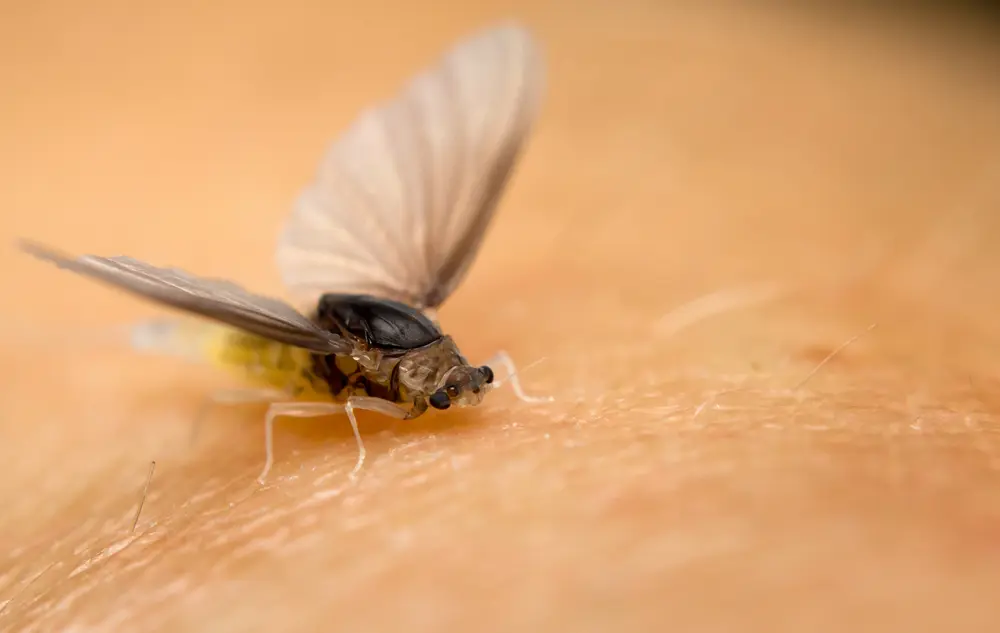
Corlaffra/Shutterstock
If you spot a lot of tiny gnats around your kitchen sink and near drains in your bathroom, you likely have what are called drain gnats. Drain gnats look similar to other common gnats, such as fruit flies.
They only grow to be about one-eighth of an inch long and are black or brown. If you ever get close enough to one, you’ll be able to identify it by the vein pattern on its wings.
Drain gnats and their eggs and larvae survive by living inside the film that sits around and in your drains.
Because these areas come into contact with things like food, drinks, and human waste, they attract these bugs. A female will lay about 100 eggs that hatch in under 48 hours, so these gnats can quickly become a significant problem.
5. Sand Flies
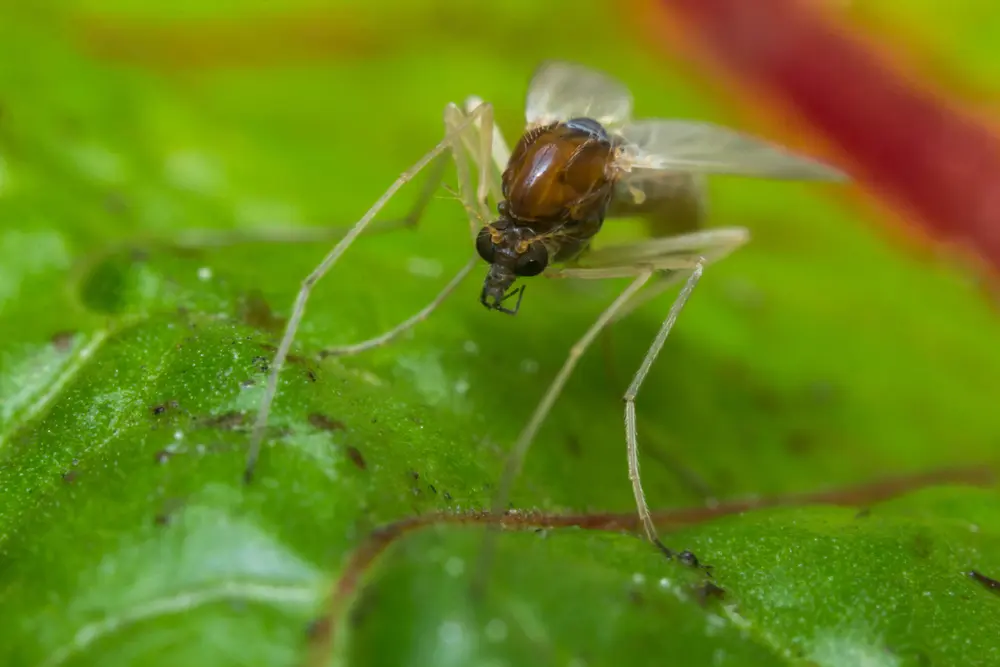
Ezume Images/Shutterstock
Sand flies, also known as sand gnats, are one of the most obnoxious kinds of gnats because they bite. And not only do they bite, but they also take a page from the mosquito’s book and feed on the blood of their hosts.
As their name suggests, sandflies prefer humid, sandy climates. If you’ve spent any time at the beach in the summer, you’ve probably noticed pesky flies that sting you with painful bites. These flies also like humid forests, lagoons, and swamps.
A sand fly’s bite is pretty painful and can leave large, red marks. These bites usually aren’t harmful, but they can be irritating. You can soothe the site with calamine lotion or aloe vera.
6. Buffalo Gnats
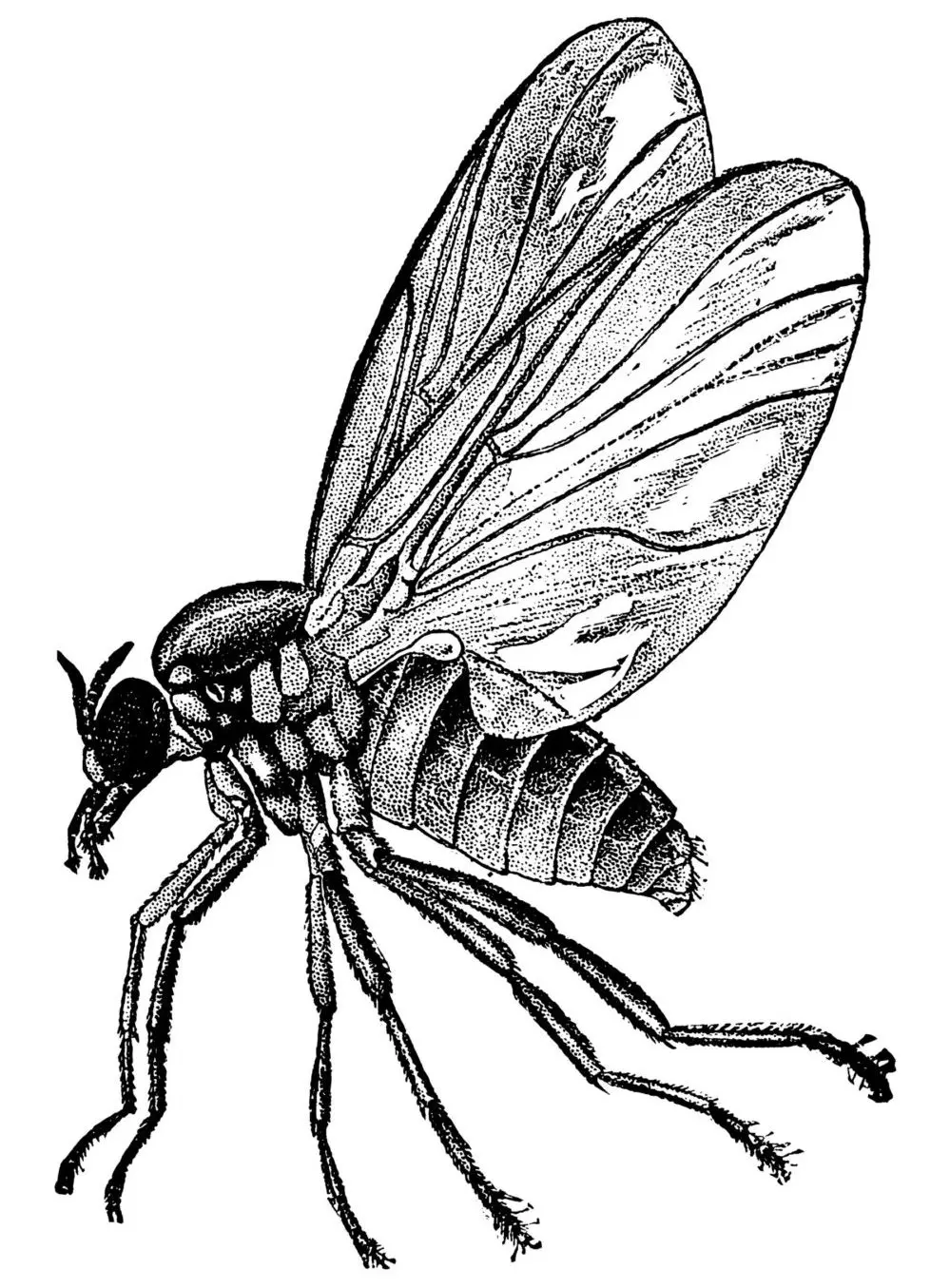
Buffalo gnats are better known by their more common name, black flies. These gnats are small and dark in color, with bodies that sport a humpback. The worst part about a buffalo gnat is that it bites.
Females must bite and feed on the blood of a human or animal to reproduce properly. The bites can be very painful and itchy, but they can also cause serious health complications.
Buffalo gnat bites are mostly known to cause health problems for animals, not humans. Their saliva can cause toxic shock syndrome, which can kill an animal. Large swarms can take down livestock, like chickens, and spread diseases to other birds.
Most humans bitten by a Buffalo gnat will experience mild symptoms like itchiness and irritation, but in serious cases, you may experience nausea, fever, and headache.
7. Gall Gnats
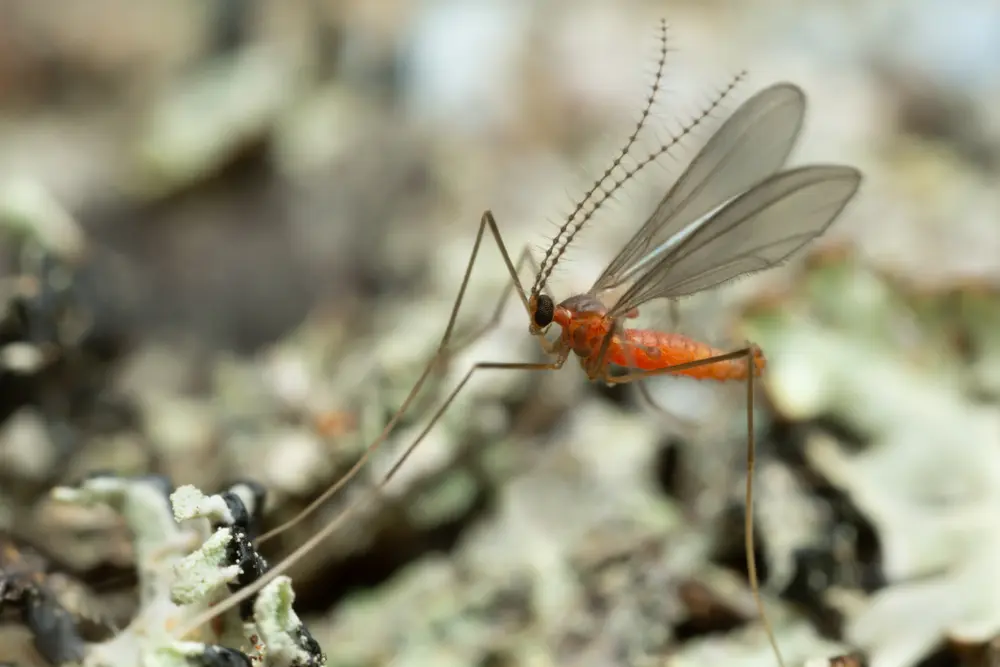
Henrik Larsson/Shutterstock
Gall gnats, also known as gall midges, are very tiny insects that look shockingly similar to mosquitoes. But the good news is that these little guys don’t bite or sting.
Gall gnats are attracted to plants and feed on all kinds of plant tissues. Their eating habits can cause abnormal plant growths called galls, which is where the bug gets its name.
Although gall gnats prefer plants most of the time, the females will also feed on sweat, blood, and pus to absorb more protein necessary for producing their eggs.
8. Phorid Gnats
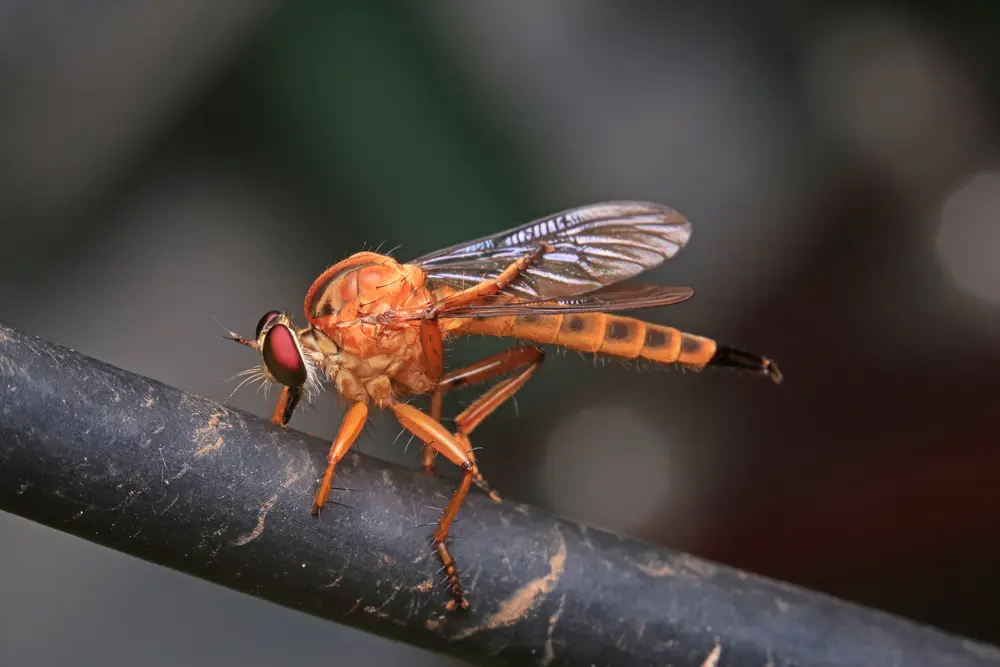
Siriporn Schwendener/Shutterstock
Like the buffalo gnat, the phorid gnat is also distinguishable by its humpback body shape. Phorid gnats are often confused with fruit flies due to their small, tan bodies.
It’s difficult for us to tell from where we stand in our kitchen, but phorid gnats don’t have as many red eyes as fruit flies do.
Phorid gnats don’t bite humans or animals, but they can still spread harmful diseases and parasites. They’re attracted to any kind of decaying food, including fruits, vegetables, meats, and other matter.
These gnats will also use decaying matter as their breeding ground, laying eggs within rotten pieces of fruit or meat.
Although you can find these gnats in your home, they mostly prefer to remain outside. They are common in gardens and prefer warm environments.
9. Midges
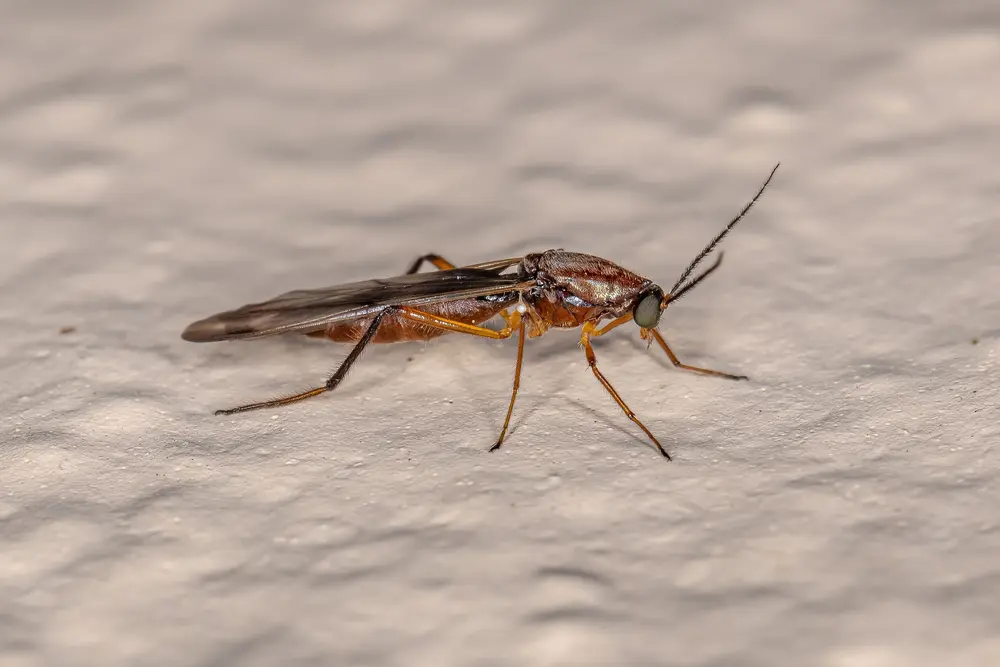
Vinicius R. Souza/Shutterstock
The last gnat on our list is another biting fly called a midge. Like mosquitoes, only the female midges bite humans and animals to feed on their blood. Their teeth are quite sharp and can cause painful bites, despite the fly’s small size.
Midges also look similar to mosquitoes, so it can be difficult to distinguish between the two. They have dark brown bodies and wings. Their bodies expand as they feed, turning a reddish color as their abdomen fills up with blood.
You might recognize the midge by one of its more popular names: no-see-ums. These tiny gnats are smaller than one-eighth of an inch long, making them difficult to spot until you feel their bite.
Frequently Asked Questions
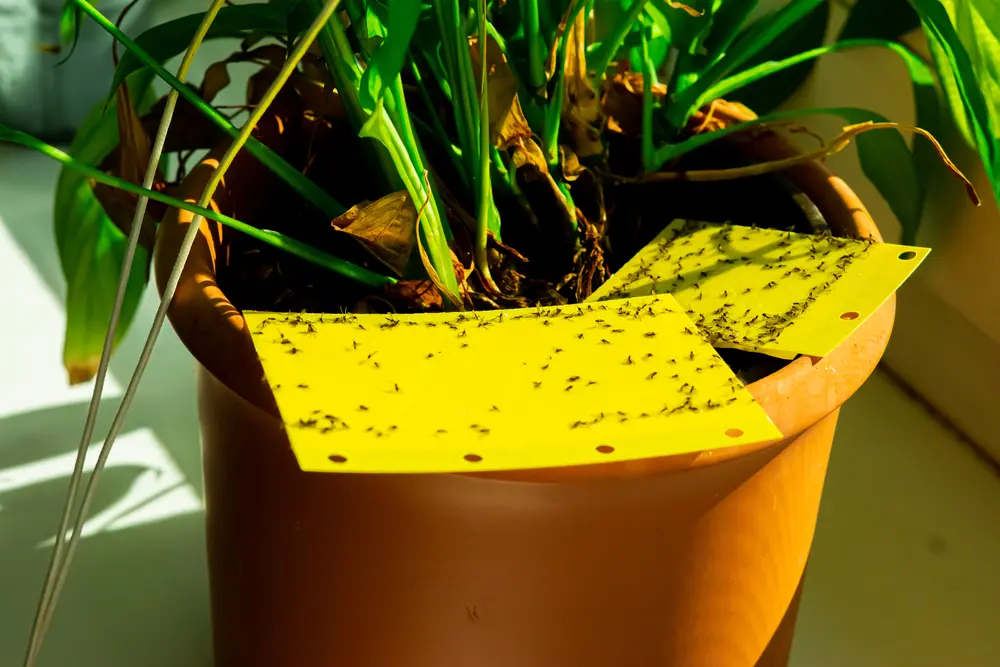
MarcOliver_Artworks/Shutterstock
Despite their tiny size, gnats find a way to make life way more irritating than it needs to be.
So, it’s natural that you might have more questions about these little creatures. Continue reading below to find some of our more frequently asked questions.
How do gnats get into my home?
Gnats are very tiny insects, so it’s not hard for them to slip inside your home through the tiniest cracks and openings.
They can make their way through cracks in doorways and windows as well as holes in screens.
Gnats are more likely to enter your home if they discover a food source inside, such as fruit left on the counter or a trash can full of old food.
How do gnats multiply?
Most gnats lay their eggs inside the food that they feed on, which is why you may see baby gnats called larvae roaming around your fruit or trash can.
Because gnats have such a short lifespan, they reproduce quickly. A female gnat can reach maturity in less than a week and may lay as many as 300 eggs in just a few days.
How long do gnats live?
The lifespan of a gnat depends on its species. Some gnat species only live for about a week, while others can live for about a month.
What foods attract gnats?
Various species of gnats are attracted to a wide range of foods. These insects can be herbivores or omnivores, depending on what type they are.
However, most gnats are attracted to soft and sweet fruits. Many gnats are also drawn to decomposing or fermenting plant matter along with fresh vegetables, plant roots, and even meats.
How do I get rid of gnats?
There are many ways to approach a gnat problem in your home. You can try DIY methods, such as vinegar mixed with dish soap and sugar, which often attract and trap gnats.
Other people prefer to use store-bought solutions like traps and sprays.
When all else fails, you can always contact a professional pest control company. Some people find success treating a small gnat problem themselves, but larger infestations can be more challenging to eliminate.
What Are the Different Types of Gnats?
As you can see, many different types of gnats can invade your home and take up residence in your kitchen. Our list is by no means exhaustive, as there are over 3,000 species of these tiny insects in the world.
But it does include some of the most common house gnats in the United States. By identifying the type of gnats you have in your home, you can better attack the problem and get rid of them once and for all.

